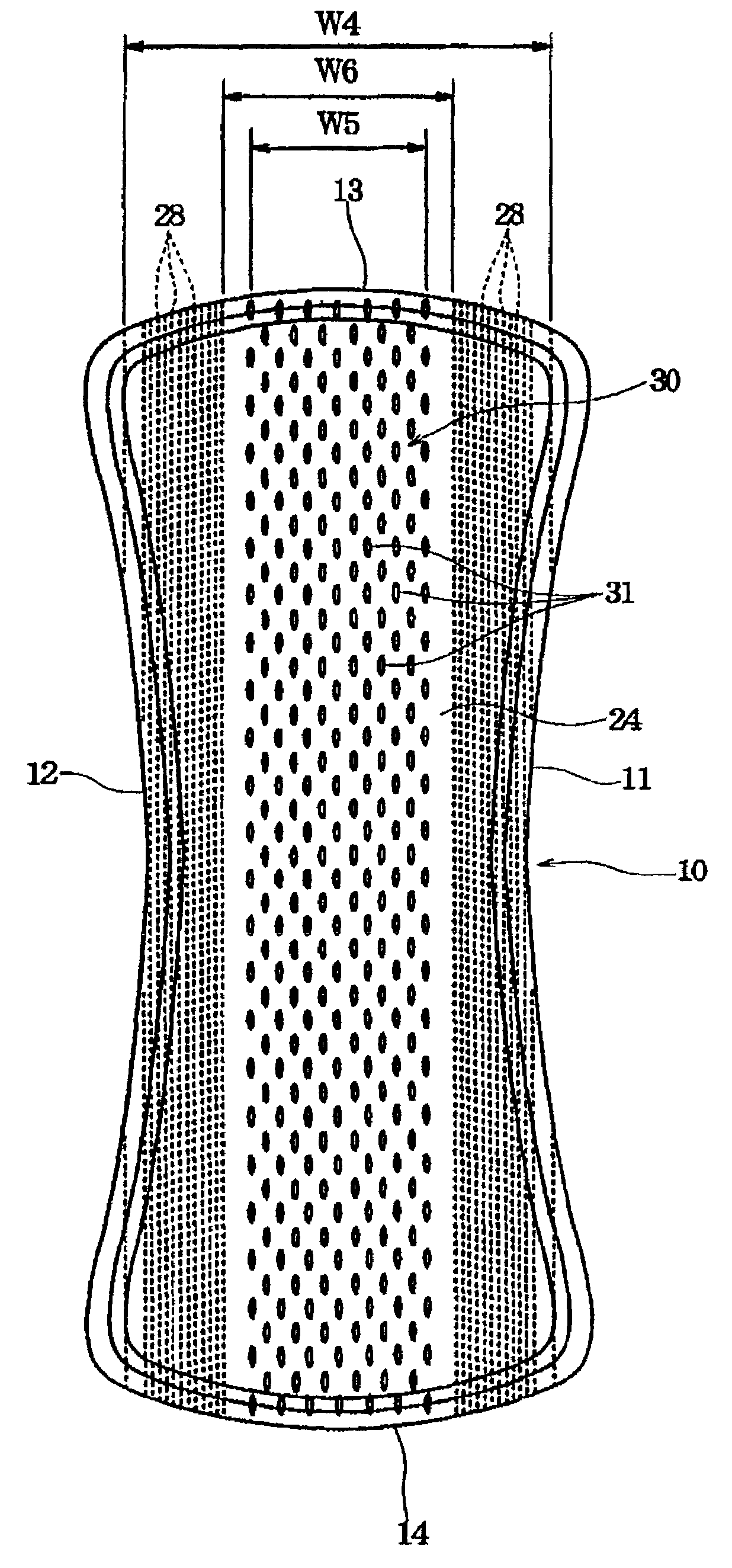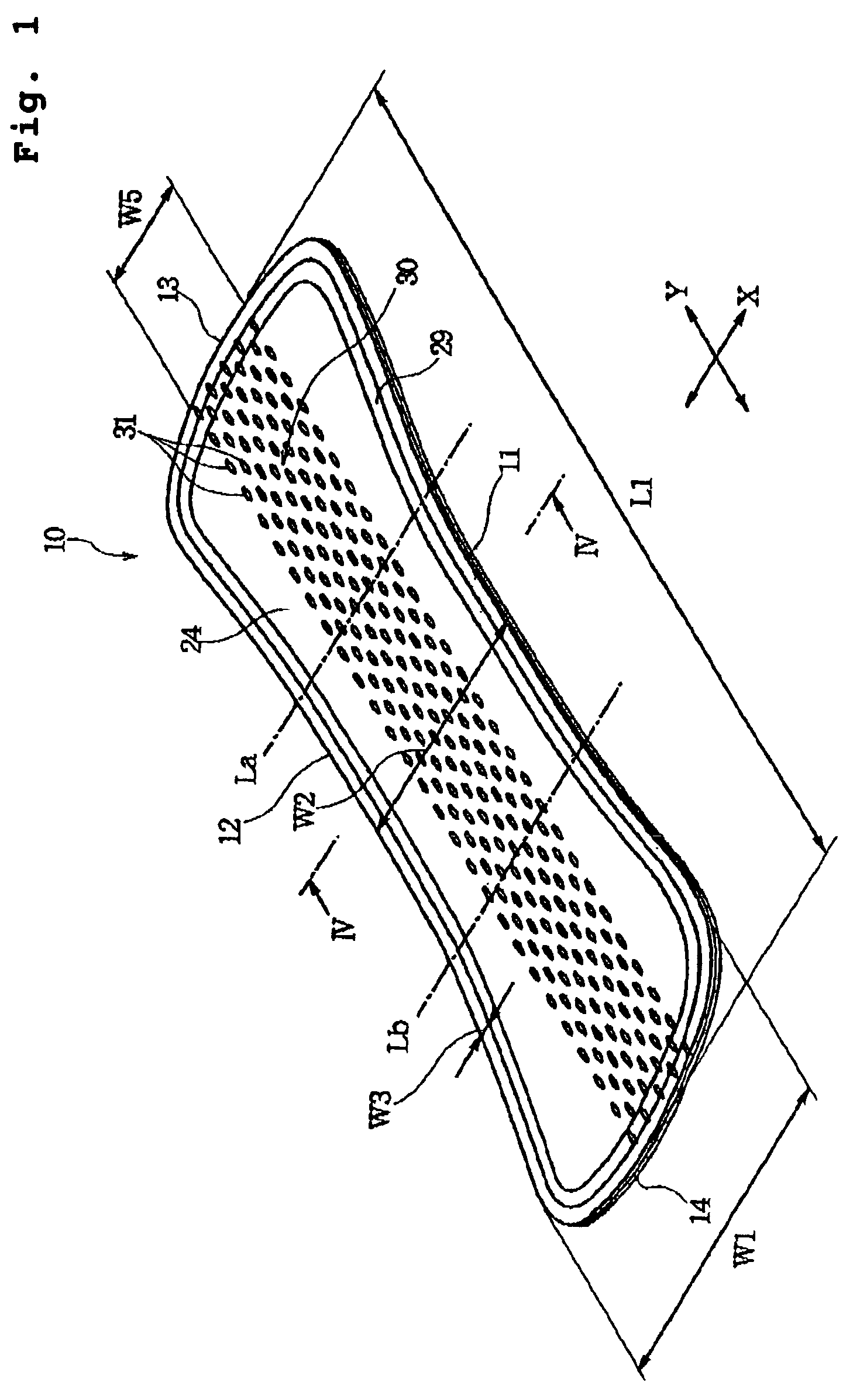Absorbent article having passage holes in a central region
a central region and absorbent article technology, applied in the field of thin absorbent articles, can solve the problems of lateral liquid leakage from the absorbent article, tampons, and local application of liquids that are liable to provide unpleasant feelings to wearers, and achieve the effect of increasing the liquid absorption capacity
- Summary
- Abstract
- Description
- Claims
- Application Information
AI Technical Summary
Benefits of technology
Problems solved by technology
Method used
Image
Examples
example
Example
[0079]An absorbent article having the same structure as that shown in FIGS. 1 to 5 was prepared.
[0080]The topsheet 24 was formed of a through-air bonded nonwoven fabric comprising sheath / core type bicomponent synthetic fibers (the core was PET; the sheath was PE) having a fineness of 2.2 dtex and a fiber length of 44 mm. The basis weight was 25 g / m2 and the density was 0.0625 g / cm3.
[0081]The intermediate sheet 23 was formed of a through-air bonded nonwoven fabric of which: the top layer 23a was comprised of sheath / core type bicomponent synthetic fibers (the core was PP; the sheath was PE) having a fineness of 3.3 dtex and a fiber length of 44 mm; and the bottom layer 23b was comprised of sheath / core type bicomponent synthetic fibers (the core was PET; the sheath was PE) having a fineness of 2.2 dtex and a fiber length of 51 mm. The basis weight was 25 g / m2 (the top layer 23a was 11 g / m2; the bottom layer 23b was 14 g / m2) and the density was 0.0833 g / cm3.
[0082]The liquid absor...
PUM
 Login to View More
Login to View More Abstract
Description
Claims
Application Information
 Login to View More
Login to View More - R&D
- Intellectual Property
- Life Sciences
- Materials
- Tech Scout
- Unparalleled Data Quality
- Higher Quality Content
- 60% Fewer Hallucinations
Browse by: Latest US Patents, China's latest patents, Technical Efficacy Thesaurus, Application Domain, Technology Topic, Popular Technical Reports.
© 2025 PatSnap. All rights reserved.Legal|Privacy policy|Modern Slavery Act Transparency Statement|Sitemap|About US| Contact US: help@patsnap.com



